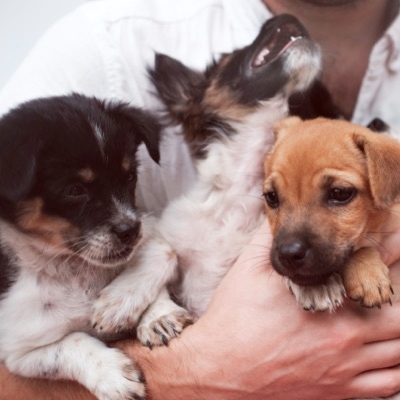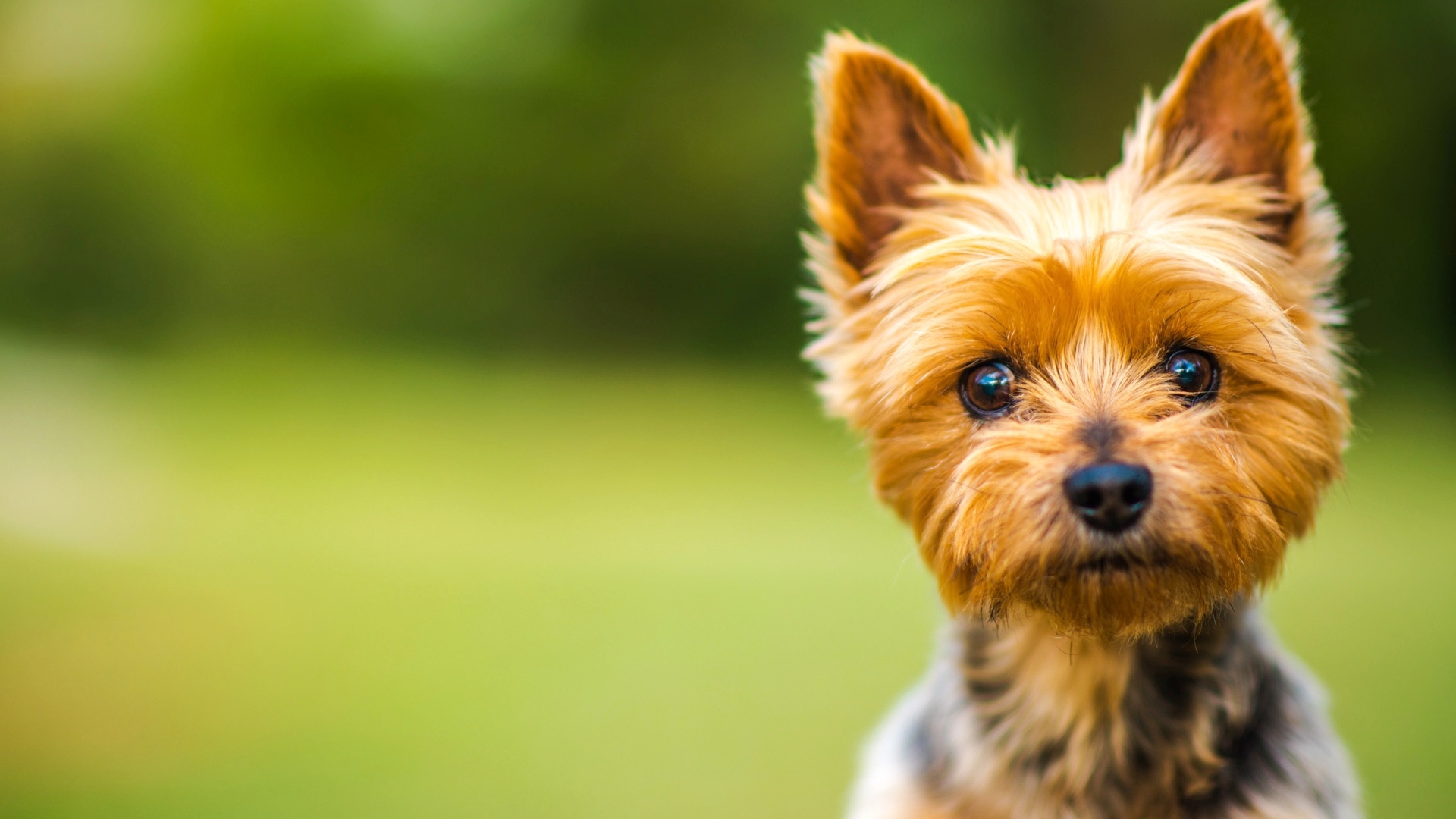Life With A New Puppy:
Summary:
Preparing your home for a new puppy may seem daunting the first time around but it doesn't have to be. Learn how to setup a safe puppy space, how to normalize handling, and why puppies need to chew.


The first step for any new puppy owner begins before they even bring their new pet home. Puppy-proofing your home for the first time is similar to toddler proofing it. Puppies have an innate curiosity and they will explore everywhere they can. You will want to get down on your knees and look at your home from your puppy's perspective. Everything should be off the floor, put away, and closed up. Look for wires, electrical outlets, rugs with fringe, hanging pot holders, and dish rags that smell like food.
Set up a Puppy Space
Don't allow your puppy the run of the house until he has been house-trained. Start him in one room you can be in with him; make sure it can be enclosed by a door or gate. The room should have a crate (if crate training), chew toys, and a water bowl. If you don't have a space, you can gate off, try getting an x-pen, or somehow gating off an area in an open floor plan room. That way, your pup can have the freedom to walk around, and you can watch him. This will set your puppy up to succeed when you can't limit the space he has to roam.
Handling
One thing we want to do while our puppies are small is teach them to enjoy being handled and touched all over. We don't just want them to tolerate being touched; we want them to love being touched as much as possible. Then when they're not enjoying the experience, say at the veterinarian's office, or when they've got something in their paw or muzzle, the unpleasantness will only be due to the circumstances and not an added stressor for a dog already averse to being touched in those areas.
Perform these exercises without a leash, if possible. If a leash is required, always allow your puppy to move away from your touch while practicing.
Consent is imperative for these exercises. If the dog is not consenting to be touched, and you force the issue you will only be making things worse.
There is a particular order of operations for the following exercises. You must reach for or touch the puppy first, then deliver the treat. Avoid feeding your puppy the treat as you reach for him! This is extremely important. We want puppies to associate us reaching for or touching them with the opportunity to eat a treat.
If we touch and feed him simultaneously, our puppy may not notice we are touching him, or he might stay to eat the treat even though he feels uncomfortable.
Practice this order of operations without your puppy first. Use an object, like a book, and practice touching the book, then remove your hand and extend it with the treat in it toward the book. This practice may feel foolish, but you will be glad for the practice when you work with your live, wiggly pup!
Remember to smile, or at least have a relaxed face and attitude. If you're frowning in concentration, your dog will wonder what is up that's so concerning. You can also chat with your puppy as you go along. This is a critical time you're spending with your dog; it is not a chore!
Don't put the treat you'll give in the same hand you're touching your dog with. The dog will naturally turn her head and become a fluffy pretzel, bending and twisting to see what that yummy thing is in your hand, making your job much harder and distracting the dog from noticing what's going on.
Chewing
All babies gnaw and chew to work through the discomfort of teething, but puppies especially need to chew. Dogs learn a world of information through their mouths and noses, so chewing is a manner of exploration, an expression of energy, and a way to get those new teeth out.
Make sure your puppy has age-appropriate things to chew. Pet stores are filled with options, but you may also want to ask your veterinarian. If you are still unsure, contact Nicole Flowers.
Don't confuse your dog. Unless you want your dog chewing on all shoes, don't give them an old shoe to chew on, sock, or household object. In that case, there is no way for them to know the difference between a "legal" and an "illegal" object.
A very young puppy teething may well love a wet, frozen washcloth to chew on. If you do that, supervise and hold the washcloth, or sit next to your puppy as he chews. Take it away as soon as he's done with it.
If your puppy chews something of yours, you've left where he can get it, scold yourself and remember that puppies can only chew things we give them access to.
If you have small children, it's tough for anyone, canine or human, to know the difference between a dog toy and a kid toy. Do your best to keep the item separated and your pup in a gated or crated area so that he's not chewing on your child's toys and vice versa! Never leave young children and dogs of any age unattended, even for a second.


